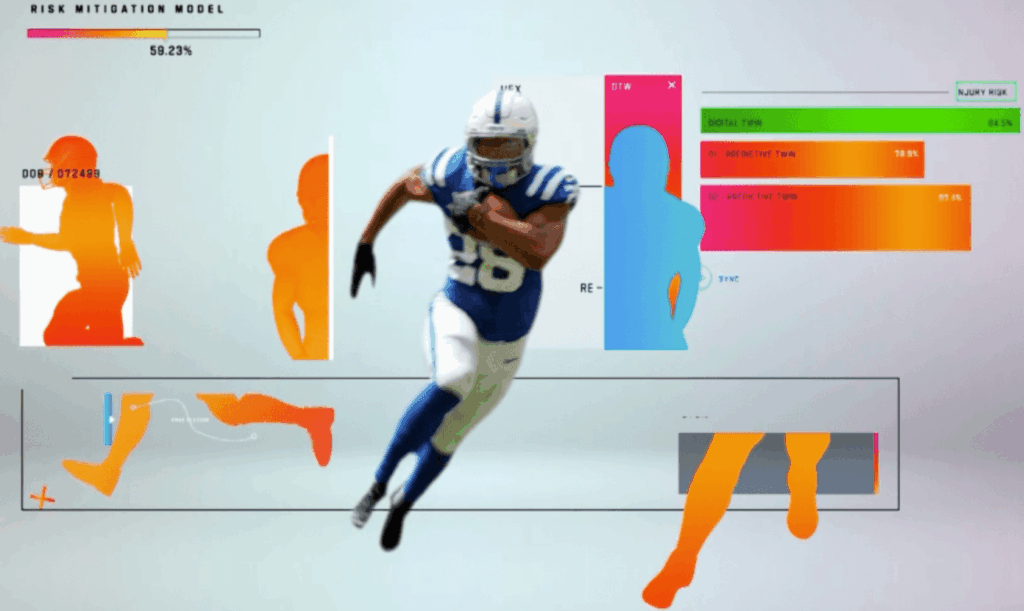Fantasy football is entering a transformative era where machine learning, predictive analytics, and human intuition intersect to redefine the drafting experience. The most advanced platforms now combine real-time data, crowd-sourced insights, and behavioral analysis to offer smarter, more personalized recommendations for every user. By balancing algorithmic precision with emotional context, fantasy tools are empowering managers to make decisions that align with both their instincts and the numbers. The future is not about replacing human judgment; it is about enhancing it through technology that understands psychology, performance metrics, and evolving fan strategies.
NFL Next Gen Stats — Unlocking Hidden Player Metrics
The integration of NFL Next Gen Stats (NGS) has revolutionized fantasy football analytics by introducing precise, player-specific tracking at an unprecedented scale. With sensors embedded in player gear and stadium infrastructure, NGS captures millions of data points per game, offering insights into player speed, acceleration, separation, and catch probability. These metrics go beyond traditional box scores to identify undervalued assets and breakout candidates, fundamentally shifting draft strategies. Fantasy managers leveraging these datasets can anticipate trends before they appear in mainstream rankings, giving them a competitive advantage.
Advanced machine learning algorithms trained on NFL NGS datasets process variables like player workload, defensive matchups, and route efficiencies to generate weekly predictive outputs. By analyzing high-granularity data, models can forecast breakout performances or regression candidates more accurately than traditional stats alone. This unlocks a higher tier of competitive edge for fantasy managers willing to embrace data-driven approaches.
ESPN Analytics Coverage — Deep-Dive Insights into Fantasy Value
ESPN’s NFL Insider Analytics division has evolved into a powerful resource for fantasy players seeking an edge. By combining expert film breakdowns with proprietary datasets, ESPN evaluates player usage rates, red-zone opportunities, and matchup leverage scores in near real-time. Their coverage integrates contextual insights, such as coaching tendencies and weather patterns, with algorithmic forecasts to produce robust projections for every position.
While ESPN’s analytics platforms rely heavily on machine-driven projections, they also integrate expert scouting opinions to refine insights. This hybrid approach acknowledges that while machine learning can process patterns invisible to the human eye, the contextual interpretation of those numbers requires domain expertise. The result is a holistic system where the quantitative and qualitative inform each other, enhancing decision-making in complex draft environments.
Fantasy Sports Industry Report 2023 — Shaping the Ecosystem

According to the Fantasy Sports & Gaming Association’s (FSGA) 2023 report, over 62.5 million participants now engage with fantasy sports in the U.S. alone, with the fantasy football market accounting for nearly 73% of total activity. The report highlights how platforms are increasingly adopting AI-powered draft assistants to meet growing demand for personalized recommendations and streamlined research. With player pools becoming deeper and leagues more competitive, dynamic insights have become essential for sustaining engagement.
The FSGA report also reveals that fantasy sports generated approximately $9.4 billion in industry revenue in 2023, with mobile app-based platforms dominating at nearly 81% market share. To capitalize on this surge, platforms are investing heavily in technologies that combine machine learning with intuitive, user-friendly interfaces. This investment aims to attract casual users while maintaining advanced tools for competitive managers, creating a balanced ecosystem of accessibility and depth.
Best Draft Assistant Fantasy Football Apps — Personalization Meets Prediction
With the advancements in technology specially in the mobile sector with the addition of the latest AI software’s, some of the leading draft assistant fantasy football apps now integrate real-time data updates with predictive analytics to offer personalized recommendations for every user. These platforms do not just crunch numbers; they adapt dynamically to league-specific variables, scoring formats, and roster structures. By learning from player behavior and league history, these apps provide context-aware strategies that evolve weekly based on injury updates, coaching adjustments, and matchup anomalies.
Machine learning allows these apps to analyze individual manager tendencies, such as preferred drafting styles and waiver-wire activity, to tailor recommendations more accurately. This creates a symbiotic system where user input refines predictive outputs, blending raw computational power with behavioral profiling to maximize drafting precision and season-long success.
Journal of Sports Analytics — The Psychology Behind Fantasy Decisions
A 2022–2024 series of studies published in the Journal of Sports Analytics explores the psychological dimensions influencing fantasy football decision-making. Researchers found that confirmation bias, loss aversion, and recency bias significantly affect how managers interpret data and make draft choices. Emotional factors often lead users to overvalue star names or recent performances, even when predictive analytics indicate otherwise.
Integrating behavioral data into fantasy platforms allows algorithms to identify when users deviate from optimal choices due to emotional bias. By flagging these tendencies and offering objective alternatives, platforms empower managers to recognize subconscious influences and recalibrate their strategies without stripping away personal agency or preference.
AI-Augmented Drafting — Partnering Precision with Instinct
Machine learning’s role in fantasy football is not to override human judgment but to enhance it. Predictive engines synthesize injury probabilities, matchup trends, and player fatigue data to inform decisions while leaving room for individual creativity and gut instinct. The optimal drafting process merges statistical rigor with personal strategy, allowing managers to blend historical insights with real-time dynamics.
Fantasy platforms are pioneering a collaborative intelligence model where AI offers a framework of probabilities, but users retain final control. This synergy acknowledges that football remains unpredictable, and instinct — informed by fandom, team loyalty, and unique league dynamics — remains a critical differentiator.
Crowd-Sourced Wisdom — Leveraging Community Trends
Fantasy football is inherently social, and platforms now increasingly integrate crowd-sourced input into their analytics. By aggregating live user decisions across thousands of drafts and waiver claims, apps can identify emerging sleeper trends or shifting positional values before mainstream projections catch up.
Machine learning systems detect market inefficiencies by comparing crowd sentiment against predictive projections. When the wisdom of the crowd diverges from expected performance models, it highlights opportunities where undervalued players can become strategic steals, bridging quantitative rigor with communal intuition.
Real-Time Data Streams — Staying Ahead of the Curve
Modern fantasy success relies on up-to-the-second updates, from injury reports to defensive depth chart changes. Platforms leveraging live feeds can automatically adjust projections, helping managers pivot quickly when unexpected developments occur. These systems integrate data from NFL Next Gen Stats, ESPN Insider coverage, and third-party sources to create a comprehensive real-time ecosystem.
With real-time insights, managers can make informed moves faster than competitors, gaining leverage in leagues where reaction speed can determine championship outcomes. The blend of predictive modeling and live updates forms a seamless drafting and management workflow optimized for rapid adaptation.
The Future of Fantasy Football — A Human-AI Partnership
The next evolution of fantasy platforms centers on harmonizing human creativity with algorithmic efficiency. By combining predictive analytics, behavioral profiling, and real-time community insights, platforms are moving toward hyper-personalized systems that adapt uniquely to every manager and league structure.
The future of fantasy sports lies not in eliminating human instinct but in amplifying it. Platforms that respect the emotional and social aspects of fandom while providing innovative analytics will define the next generation of engagement, creating tools that feel less like calculators and more like collaborators.
This article blends technological precision, behavioral insights, and evolving fan psychology to provide a comprehensive view of fantasy football’s future. By merging human intuition with advanced machine learning, platforms are creating experiences tailored to individual users, where emotional context and predictive power coexist seamlessly.
